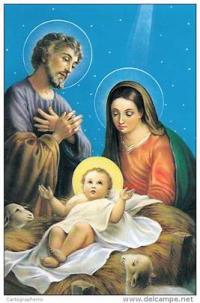
The only gospels to speak about the infancy of Jesus are those of Matthew and Luke, and their versions of the event are very different. However, most of the stories are theological in nature rather than biographical. The evangelists want to make it clear that Jesus was Lord and Saviour right from His conception. His coming was announced to Mary in Luke (1:26-38) and to Joseph in Matthew (1:18-22). His birth was proclaimed to the Jewish shepherds (Luke 2:8-14) and the gentile Magi through the star (Matthew 2:1-3). The revelation to the magi was incomplete; they had to consult the Jewish King Herod, since salvation came through the chosen people (Matt. 2:2-3). Even the mention of the manger is symbolic, bringing to mind Isaiah’s words: “The ox knows its owner and the donkey its master’s crib; but Israel does not know, my people do not understand” (Isaiah 1:3).
Most people were unaware of what had happened. However, in today’s reading Simeon and Anna recognised that God’s promise, first made known to Abraham, had at last been fulfilled. The pillars of Judaism are seen in the Law being observed by the parents of Jesus and prophecy being made by the two wise old people, guided by their faith in Yahweh. Old and New testament have met.
The destiny of the Messiah, with his death on the cross, is reflected in Herod’s attempt to kill him in the massacre of the innocents, as Pharaoh had once done with the Jewish babies in Egypt (Exodus 1:22). Piero della Francesca used this theme in his nativity scene (National Gallery, London) where he depicts a magpie on the roof of the stable (a symbol of death) and a goldfinch nearby whose red head is the colour of blood.
Luke’s story of the finding of Jesus in the temple (Luke 2:41-52) is probably a separate story of a different genre. Mary and Joseph are the ordinary parents of a Jewish child, who are faithfully following religious custom in going to Jerusalem when their child is twelve years old. They seem to have no knowledge of his identity. They, like any other parents, are frantic with worry when they find him missing from their group. His mother is exasperated when she finds him in the temple and demands to know why he has treated herself and his father in this way. This again gives Luke a chance to show how Jesus revealed his knowledge of his divine parentage and how his destiny was to serve him in a much wider circle than his family of origin. He astounded the teachers with his knowledge, marking him out for future greatness but went back to Nazareth to lead a normal life in Nazareth about which we know nothing.